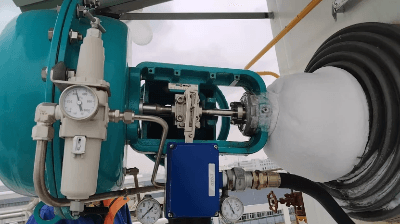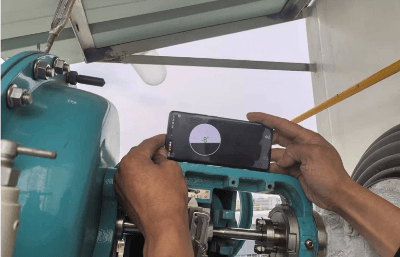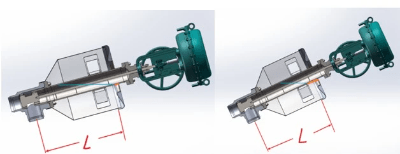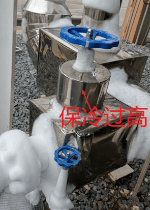Cryogenic valve icing remains one of the most persistent challenges in industrial gas applications, often leading to operational failures, safety concerns, and costly downtime.
At CenturyVal, our engineers have analyzed numerous field cases to identify root causes and develop proven solutions. Here, we share two representative case studies that illuminate
critical installation principles.
Case Study 1: The 8-Degree Installation Angle Failure
A liquid nitrogen valve in an air separation unit exhibited severe external frost formation during operation. The issue was particularly puzzling because the valve functioned properly in warm weather but iced up immediately when ambient temperatures dropped.

Our technical team performed on-site diagnostics:
· Measured installation angle: Only 8 degrees from horizontal
· Visual confirmation: Frost concentrated at the bonnet and packing area
· Operational test: After removingice, the valve froze again within one hour

Root Cause: Angle-Dependent Liquid Migration
The problem stemmed from insufficient inclination angle, allowing pressurized cryogenic liquid to migrate into the valve bonnet:
1. Liquid compression: Pressurized liquid compresses the gas pocket in the bonnet cavity, causing the liquid level to rise
2. Vaporization equilibrium: External heat transfer vaporizes some liquid, increasing gas pressure until equilibrium is reached
3. Critical proximity: At only 8 degrees, the liquid surface sits too close to the packing and stem area
4. Frost formation: The packing regiondrops below 0°C and below the atmospheric dew point, causing moisture condensation and freezing
Industry Standards vs. Practical
Reputable industry leaders mandate specific angles based on fluid properties:
· Company A: 15° minimum for cryogenic liquid fluid
· Company B: 25° for certainapplications
· Company C: 10-15° range
The 8-degree installation fell short of all recognized standards, placing the liquid nitrogen too close to the "hot end" of the valve.

Technical Note: The steeper the angle, the greater the vertical distance between the liquid surface and packing, providing an essential thermal buffer zone.
Case Study 2: The Over-Insulation Trap
A cold box external pipeline valve suffered from frozen packing,making it nearly impossible to operate. Initial suspicion pointed to inadequate insulation, but the opposite was true.

Detailed thermal imaging and dismantling revealed:
· Excessive insulation height createda cold trap
· Heat influx restriction prevented normal temperature gradient maintenance
· Condensation accumulation at the packing region accelerated freezing
Critical Finding
The insulation height exceeded optimal design parameters, paradoxically worsening the freezing problem by disrupting the valve's natural thermal profile.
Key Principle: More insulation is not always better. Cryogenic valves require carefully calculated insulation boundaries to maintain proper thermal gradients.
CenturyVal's Technical Recommendations
Based on these field experiences, we prescribe the following bestpractices:
1. Strict Adherence to Installation Angles
· Never install liquid valves horizontally – this makes packing freeze-up
· Follow fluid-specific angle requirements:
-> Liquid Nitrogen (LIN): 15-25°
-> Liquid Oxygen (LOX): 15° minimum
-> Liquid Argon (LAR): 10-15°
· Verify angle with precision tools during commissioning
2. Optimized Insulation Design
· Control insulation height toprevent cold trapping
· Use phase-appropriate insulation materials designed for cryogenic service
· Implement drainage paths to prevent moisture accumulation
3. Proactive Maintenance Protocol
· Seasonal inspections focusing onangle integrity and insulation condition
· Thermal imaging surveys to identifycold spots before frost formation
· Packing lubrication with cryogenic-grade compounds
CenturyVal's Comprehensive Solutions
Our engineering team provides:
· Pre-installation technical review toverify angle and piping design
· Customized valve configurations optimized for specific cryogenic fluids
· Field commissioning support withangle verification and thermal analysis
· Maintenance training programs foryour operations team
Conclusion
These cases demonstrate that proper cryogenic valve performance depends not just on valve quality, but critically on correct installation and insulation practices. The 8-degree angle failure and over-insulation trap represent common but avoidable errors that compromise system reliability.
At CenturyVal, we believe that technical expertise and field experience are as valuable as the products themselves. By sharing these insights, we help our partners achieve safer, more efficient operations.

